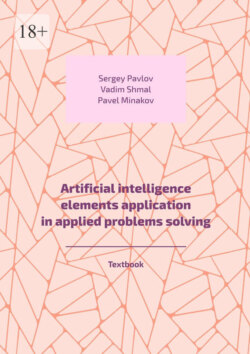Читать книгу Artificial intelligence elements application in applied problems solving. Textbook - Vadim Shmal - Страница 10
Semantic heterogeneity
ОглавлениеSemantic heterogeneity occurs when a database schema or datasets for the same domain are developed by independent parties, resulting in differences in the meaning and interpretation of data values. To distinguish between databases and data sets with different purposes and authorship structures, metadata in different data stores is sometimes tagged with metadata tags that describe the query and collection point. This is called semantic heterogeneity.
For example, database schemas can be designed for different applications with different semantic structures, but with consistency. On the other hand, datasets and resources can be retrieved in different ways and represent different information resources. Data analytics is the process of reducing information to its most relevant essence, evaluating the relevance and interpreting various data objects and information points based on their relationship to other data.
Semantic heterogeneity plays a key role in many cases, for example:
Effective knowledge management, managing dispersed, complex and ever-changing knowledge assets.
Creation of human-centric infographics, web applications or audiovisual content in knowledge management systems.
Independently developed knowledge databases and multimedia environments (eg websites, web applications) are already used by many professionals. And now the rapidly growing Internet of Things (IoT) market is increasingly focused on improving embedded devices such as smart devices and sensors, which are sources of knowledge as well as information. And while self-organizing and self-tuning systems are increasingly found in dynamic industrial systems, the more diverse approaches of new generations of experts around the world are inspiring the creation of completely new concepts in knowledge management. This also manifests itself in the development of application-specific database approaches that are specific to each area or project.
Given the different levels of knowledge accumulation in different areas, we do not expect application-specific databases in knowledge management systems to be used for all kinds of data. Just imagine if in a data-driven knowledge management system you could only find a database or query that fits the application. This may seem in some cases too simple, and sometimes too naive. When dealing with multiple data systems for knowledge management, we expect databases or query engines of different levels of complexity to work together. This may have led to the creation of multiple databases and query engines, resulting in semantic heterogeneity.
Nowadays, as more and more databases are being developed from specific databases on the same topic, it may be necessary to define new datasets (samples) for each database or database query. Some solutions exist, such as classifying metadata fields in databases and databases for different collections. But the challenge is to use existing databases as often as possible, not create new databases for different purposes.
Another good example of semantic heterogeneity is the multitude of software platforms and data processing engines used for web services. Each platform and database has its own way of displaying data. It is important not to use different data sources for different web applications, but to find a way to reconcile different data sources with different web applications. While data sources, data management, applications and systems are heterogeneous, we need a database that provides all the data we need when different applications or systems are required. And as new platforms and databases are developed, semantic heterogeneity can be expected to remain a key feature of data analysis systems.
